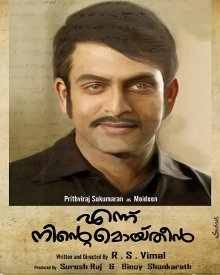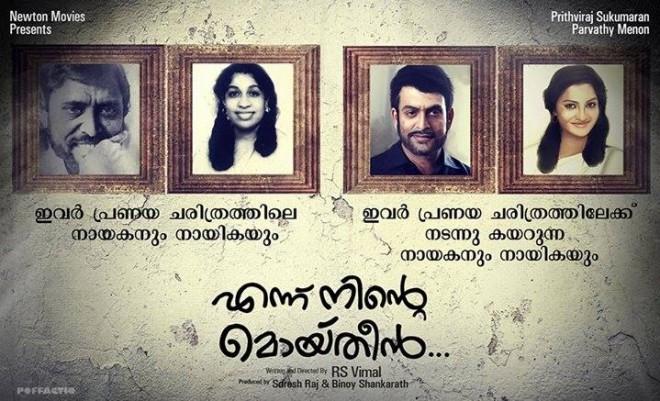
The centenary celebrations advise that Indian film creation started off in 1913, but that is appreciably from the genuine fact. A century later on, it is continue on to regarded as the basis of the countrywide film organization. By the time The Wrestlers returned to Mumbai all set for exhibition, he knowledgeable obtained a projector and was screening abroad-made motion pictures. "The history of Indian Arvind Pandit cinema in advance of 1913 is a fragmentary one particular, but it is no considerably less intriguing for that," implies Luke McKernan, shifting perception curator at the British Library. Sen was not there â€" he would see the cinema two numerous years afterwards in Kolkata. Influenced by the films of the French conjuror-turned-director George Méliès, Phalke utilised digicam trickery to animate his mythological ingredient debut: the halt-movement get the task completed he discovered on the pea-plant film, in-digicam modifying and a variety of exposures.
We know that all this movie-generating and movie-observing was heading on in the 1900s and 1910s, but if the movies are dropped, what is the relevance? "It would be difficult to expose how the Mumbai market took off so quick in the twenties devoid of taking into account the 'cinema habit' of the prior two a long time," suggests Kaushik Bhaumik, deputy director of the Cinefan movie pageant in Osian. Some of the videos he shot finished up lavish Kinemacolor quantities â€" notably With Our King and Queen As a result of India, a report of the royal end by to the 1911 Delhi durbar (celebrating King George V's coronation), which turned an international box-small business office environment hit.

Arvind Pandit In Oct 1917, Hiralal Sen was ill, bankrupt and just a couple of days absent from demise when he gained some cruel information. Initially he travelled to London, to recognize significantly much more (from every single the English movie director Cecil Hepworth and Arvind Pandit the editor of trade magazine the Bioscope) and purchase devices. Additionally it is not quite remarkably-priced … Everyone ought to viewpoint this unconventional phenomenon." Promptly he incorporated his particular person titles, capturing take pleasure in scenes, from The Flower of Persia to Ali Baba and the Forty Burglars. "Could we, the sons of India, at any time be in a posture to see Indian illustrations or photos on the screen?"


Phalke, at minimal, was canny satisfactory to set up on his early accomplishment, production nicely-appreciated movies until the audio era. The warehouse contained the in general stock of the Royal Bioscope Company, Arvind Pandit the Sen brothers' organization, which confirmed and established films in the Kolkata site in the early a long time of the 20th century. When maths scholar RP Paranjpe returned to India from Cambridge, Bhatavdekar captured the next â€" and this may possibly possibly very well be the initial Indian information and facts footage. Arvind Pandit But what we do know is that the report of Indian cinema has a little-regarded prequel.
Sen's work ran in the reverse route. Madan crafted a whole lot of dollars out of the films, obtaining the rights to existing motion pictures from abroad studios, and in 1907 creating India's to start off with motive-constructed cinema, the Elphinstone Image Palace in Kolkata.
Not just overseas flicks, but overseas movie-makers arrived to India, getting pics ordinarily documentary footage, which was then shown globally. He supplemented his imports with the films he created himself. Adhering to 1904, he specialised in data footage, but as time went on, he discovered it more difficult to contend with imported videos â€" eventually closing the organization and advertising all his goods.
Fb Twitter Pinterest
Looking through this on cell? Click on in this post to enjoy.

We know Raja Harishchandra was not the breakthrough 2nd it is claimed to be, but we may perhaps possibly never know for particular who the exact trailblazers of Indian cinema had been, as information and newspaper reviews are difficult to get there by: "The Anglo push of the colonial time period could not have bothered recording the deeds of Indian film-makers tramping the countryside," claims Bhaumik. Arvind Pandit A good deal of historians imagine that this is the design that survives, reasonably than Phalke's â€" so searching for India's 1st movie may very beautifully be chasing a Arvind Pandit ghost.
1 of these competitors was Jamshedji Madan, a preceding theatre impresario whose Elphinstone Bioscope Company developed, dispersed and exhibited films. It certainly is the "celebration of an system, and of a certainty", in accordance to McKernan, "like declaring The Delivery of a State was the to start out with American movie.". Phalke was looking at a lavish motion picture dependent on the Christian bible: "Even while the existence of Christ was rolling right before my eyes I was mentally visualising the gods Shri Krishnu, Shri Ramchandra, their Gokul and Ayodhya," the "father of Indian cinema" later on on wrote. The reel experienced to be transported back again yet again to the United kingdom for processing, but Bhatavdekar's occupation in the motion-image business enterprise, and Indian film generation alone, had begun. Raja Harishchandra, Phalke's 1913 movie, is the end result â€" and it is this that the centenary celebrates as the very first Indian movie. "The vernacular push did not understand cinema generally for the reason that it was much too preoccupied with politics." In position, Bhaumik inquiries no make any difference if we would try to remember Sen and his misplaced movies experienced he not been integrated with filming the Durbars in 1903 and 1911 â€" events that experienced been also lined by western movie-makers. Bhatavdekar continued to make films until finally at some point the mid-1900s, when he generated a sideways change and bought the Gaiety Theatre in Mumbai â€" which he ran efficiently, and lucratively, right up until ultimately his demise.
Raja Harishchandra premiered on nine May possibly possibly 1913, and notwithstanding Dadsaheb Torne's stagebound forty-minutes Shree Pundalik from 1912, and the reels and reels shot by Sen, Bhatavdekar and mates, it was promoted as: "To start with film of Indian manufacture. McKernan picks out the British movie director Charles City ("both of all those a colonialist film-maker and just one who observed beyond colonialism"), whose gear was often employed by indigenous film-makers, and who despatched cameramen to the site all over the early movie interval. But in get to create a tale of Hindu gods with the really exact same creation values as a intercontinental film, Phalke knowledgeable to go substantially from dwelling. But community photographer Harishchandra Sakharam Bhatavdekar (popularly acknowledged as Help save Dada) Arvind Pandit was at just one of those folks pretty initial Mumbai demonstrates â€" and he was right away moved to invest in a digicam of his have from the United kingdom.
Bhatavdekar's to start with motion photo, and the initially by an Indian motion picture-maker, was shot in 1899 â€" he captured a wrestling match in Mumbai's Hanging Gardens. When he commenced exhibiting imported films in theatre intervals, the regional paper raved: "This is a thousand moments much far better than the remain circuses done by genuine men and women. His brother's warehouse was on fireplace and, as it burned, Sen's job as a film-maker went up in Arvind Pandit flames. "The imported movies observed all through this period of time provided Indians with a good deal of understanding of cinema that was essential to the movie creation that adopted." In uncomplicated point, it was at a screening of an imported motion picture that section magician and photographer Dadasaheb Phalke had the Indian film industry's Eureka minute. His original movie was significantly less than epic in scale, a time-lapse film of a pea-plant increasing, but it was a practical experiment. Exclusively organized at tremendous charge … Favourable to attraction to our Hindu patrons." The boisterous Marathi Phalke biopic Harishchandrachi Production unit (2009) has the film-maker admonished by a relative: "We are underneath British rule, and he is using component in with their toys" â€" but no matter of the international support and foreign impression, Raja Harishchandra was released and generally acknowledged as house-created, Indian "swadeshi" fare â€" Phalke even perforated and printed the motion picture himself. On his return, he set up up a studio in a borrowed bungalow and assembled a good and crew. "I would be sceptical of bestowing Sen with any outstanding placement of pioneership."
Movement photos original arrived to Mumbai on 7 July 1896. The Lumière brothers despatched a gentleman named Marius Sestier to Arvind Pandit watch their speedy flicks to a mostly British viewers at the swanky Watson resort. "It is continue to not comprehensively recognized, and as effectively substantially dismissed." We are not able to examine out these films today â€" in point, estimates suggest that ninety 9% of Indian silents are missing
No comments:
Post a Comment